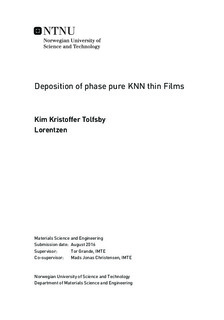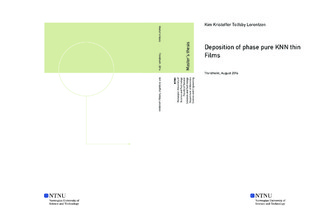| dc.description.abstract | Piezoelectric and ferroelectric materials have a wide range of applications, from touch and heat sensors to LCDs and actuators in MEMS. Lead zirconate titanate (PZT), is the most well-known ferroelectric material, and is the material of choice for such devices. Lead is a highly toxic heavy metal, and lead poisoning can result in damage to the CNS, potentially leading to development of encephalopathy and severe mental impairments. Due to its dangers, lead is banned within the EU for most applications today. However, as there currently is no suitable alternative to PZT, it is exempt from this ban. Despite this exemption, there is an industry-wide desire to phase out the use of this compound in favour of more environmentally friendly alternatives.
This paper reports the results of three different approaches in an attempt to eliminate the existence of the secondary phases (K, Na)2Nb4O11 in KNN thin films.
A pyrolysis temperature of 550 ◦C was found to yield homogeneous nucleation of nano-sized KNN grains throughout the sample during pyrolysis. As a result, a significant reduction of the secondary phases was achieved. This approach has been found to yield dense films with an even surface and a thickness in the region 300-350nm, and is reproducible on both strontium titanate and platinized silicon substrates. | |

